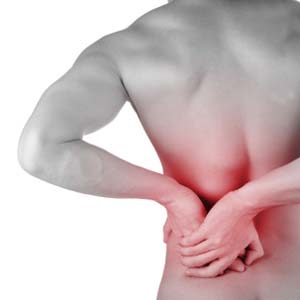Brian Schiff’s Blog
Injury Prevention, Sports Rehab & Performance Training Expert
I am currently working to attain my transitional doctorate in physical therapy (tDPT) at Northeastern University. As I continue to work full time as a clinician, it has been really cool to apply the learning with my current caseload. At this time, I am in a motor control class that is both fascinating and challenging. In week three, we examined pain and the impact it has on neuroplasticity (the brain’s ability to adapt or change).

In the sports medicine realm, I generally think many practitioners solely focus on the musculoskeletal system or physical impairment. As such, interventions are developed around tissue constraints, ROM deficits, weakness, etc. Too often, we look past the power and impact of the brain and how it plays a vital role in healing and return to play. For some patients, there is a maladaptive response to injury/surgery and a hypersensitivity of the central nervous system or central sensitization that occurs. Pelletier (2015) notes that structural and functional changes can occur. (1)
Two critical concepts to consider here are:
- Sensory amplification – sensory and motor representations change resulting in perceptual changes in body image, motor control changes, and even a persistence or amplification of pain
- Experience dependent plasticity – patient’s response to pain is related to prior experience and may experience maladatpive imprinting where the pain outlasts the physical insult
Kleim (2008) gives a great lesson on experience dependent plasticity and states that learning is essential for the brain to adapt to damage self taught behavioral changes can be maladaptive or positive and specific forms of neural plasticity and associated behavioral changes are dependent on specific kinds of experience (2). While one would assume that chronic pain is rare in athletes, I would counter and say it is probably just overlooked as we tend to expect athletes to “push through the pain” because of the driven culture we live in. Coaches, parents and even teammates can affect the mindset around injury and recovery.
So, I am about 4 weeks into my new job at as a supervisor and sports physical therapist at the Athletic Performance Center (www.apcraleigh.com). So far, I am really enjoying it.
I have seen lots of different athletes ranging from youth to professionals. The one thing people often seek to eliminate with rehab is pain. Ironically, what most people fail to realize is that this pain is actually one of the biggest tools they need to rely on in the recovery process.
You see, most injuries I encounter are related to repetitive micro-trauma or overuse. Such injuries include tendonitis, bursitis, stress fractures, muscle strains, cervical and lumbar disc bulges, and so on.

It is critical that people learn to read their own pain as a marker of how well their body is holding up to the stress they are subjecting it to each day. If they simply learn to recognize and respect pain and what it tells them, they would be able to rehab and recover much faster.
Pain, while undesirable, is one of the most important tools we can use as therapists, strength coaches, ATC’s and fitness enthusiasts to judge how best to move forward or step back.
No pain, no gain is old school and best left in the past. To help athletes today and long term, it is best to educate them how best to recognize and react to pain when it occurs. Too many times they ignore it or fail to report it because they believe they will be held out of participation, or it is not a big deal.
Little do they know that this mentality often costs them more playing time long term or even may jeopardize their health in later years. So, as I tackle patella tendonitis, lateral epicondylitis, muscle strains and such, I teach my clients how to interpret pain in response to their daily life and sport.
Pain is not the enemy, but rather a warning signal our body sends us when it simply needs a break or is beginning to break down. Therefore, learn to listen more closely to your body and let pain guide your training, play and rehab process.
I advise people to consider the following:
- Soreness up to 3-4/10 on a 0-10 pain scale (10 being the worst) is acceptable provided it does not escalate with activity
- Any increased soreness after an activity should subside or return to baseline within 24 hours
- Pain that is at 5/10 or greater is a red flag and precursor to mechanical failure
Finally, keep in m ind that once pain subsides, that does not necessarily mean your body is done healing. Pain is a symptom and there is often a mechanical cause or disruption that leads to it. So, just remember to pay close attention to soreness and pain with activity as your body was programmed to let you know when tissue is starting to break down.

